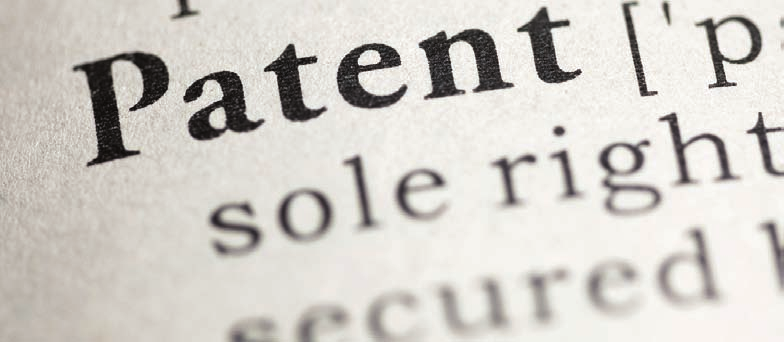
Whether Selling of Spare Parts Amounts to Infringement?
The claims of a patent relating to a machine would identify the specific components or elements that combine to make up the patented machine. Therefore, once the patent office issues a patent for the machine, the patentee has the right to exclude others, under Section 48 of the [Indian] Patent Act, 1970, from making, using, offering for sale, selling or importing any machine that contains all the components of any claim in the patent.
In this regard, it is important to note that the patentee has the right to prevent sale of all or any components of the patented machine as “spare parts”. In this regard, observation made in the case, titled Dunlop Pneumatic Tyre Company, Limited v. David Moseley & Sons, Limited, (1904) 1 Ch. 612 is notable, where the court held that, “If there was a patent for a knife of a particular construction, and an injunction was granted restraining a defendant from selling knives made according to the patent, and he was to sell the component parts so that any schoolboy could put them together and construct the knife, surely that sale would be a breach of the injunction.
REPAIRING V. RECONSTRUCTION
A universal application of the above legal position would be rather complicated. On an illustrative basis in the case of patented products that have met their useful life and are in need of repair, a refurbisher will replace one or more parts to restore the machine and return it to its owner or resell the machine to others. The spare parts supplied typically constitute less than all of the claimed elements of a patented invention. The refurbisher views itself as merely a repairer of a spent device for which the patentee was already paid. The patentee, however, considers the refurbisher as effectively reconstructing the patented device and thus liable for patent infringement.
In an effort to resolve this historical dispute between original equipment manufacturers (OEMs) and refurbishers, courts established the principle that “repair” of a patented product is permissible, but “reconstruction” of the product is not (Aro Manufacturing, Co., Inc. v. Convertible Top Replacement Co., Inc., 81 S.Ct. 599).
In the Indian context, the test of infringement in these cases would be the determination of the nature of activity of the third party, i.e. whether it amounts to mere “repairing” of the patented product or it falls under the definition of“making” as per Section 48 of Patents Act, 1970.
Reference, in this regard is also placed on the decision rendered in Shutz (U.K) Limited v. Werit (U.K) Limited, [2013] UKSC 16,where it laid down the following principles to adjudge whether the replacing a part of patented machine amounts to repairing or making:
- Whether replacing a part of a patented article constitutes “making” is a matter of fact.
- The concepts of “repair” and “making” are not mutually exclusive – they may overlap – but it is legitimate to consider whether the part being replaced (in this case, the bottle) is such a subsidiary part of the patented article that its replacement, when required, does not involve “making” the article. It may therefore sometimes be useful to consider whether the alleged infringer is repairing rather than making the article.
- Would the life expectancy of the part being replaced compared to the remainder of the article mean that one would expect to replace that part during the life of the article as a whole? The fact that a component of an article was physically easily replaceable and relatively perishable would be a factor indicating that replacement of that component did not amount to the impermissible making of an article.
- However, does the part being replaced embody the inventive concept of the patent? If so, that would indicate that replacing the part would amount to a “making” of the patented article.
- Is the replacement part integrally connected to the retained part, such that the work needed to carry out the replacement involves a significant degree of demolition? If so, the act in question is more likely to be one of manufacture or “making”.
LIABILITY FOR SELLING OF SPARE PARTS
At present, the precedent is that such manufacturer or seller would not be held liable for any civil actionor for contributory infringement unless it is provedthat there has been direct infringement by the making of the patented product with those spare parts.
CONCLUSION
At present, the position in India is that if a patentee wants to prosecute a seller of spare parts of its patented product, he would have to show that the seller is selling all the parts. This undoubtedly affects a patentee’s right to enjoy his exclusive rights without any fear of its patent being infringed. Therefore, it becomes necessary for Courts to appreciate and consider thatifan entity/person engaged in manufacturing and sale of spare parts, whichare novelto the invention, is intentionally replacing the components of the patented product, the manufacturer and seller of such spare parts should be liable for direct infringement and not for contributory infringement.
Recent Posts

Condition Precedent and Condition Subsequent under the Indian Contract Act, 1872
Jan 2019

Conceptual Similarity of Trade Marks: The Indian Position
Nov 2018

Decoding the ‘Myth’ behind the 2-Part Claim Drafting Format in the context of the Koniklijke Philips’ Case
Oct 2018